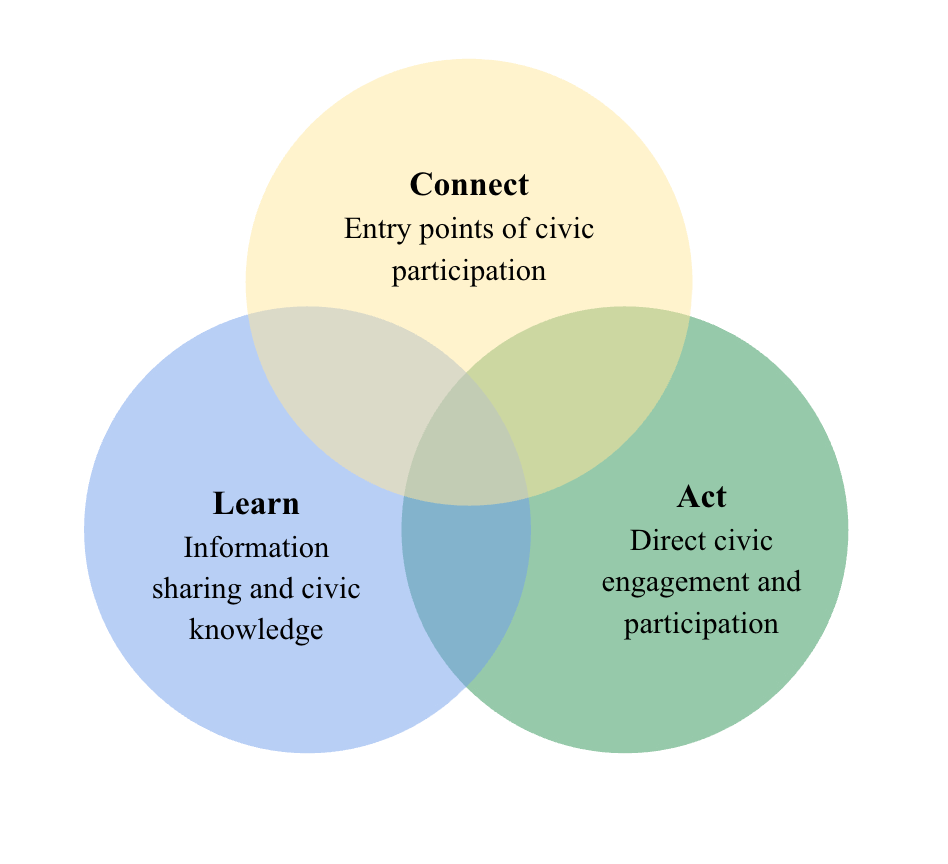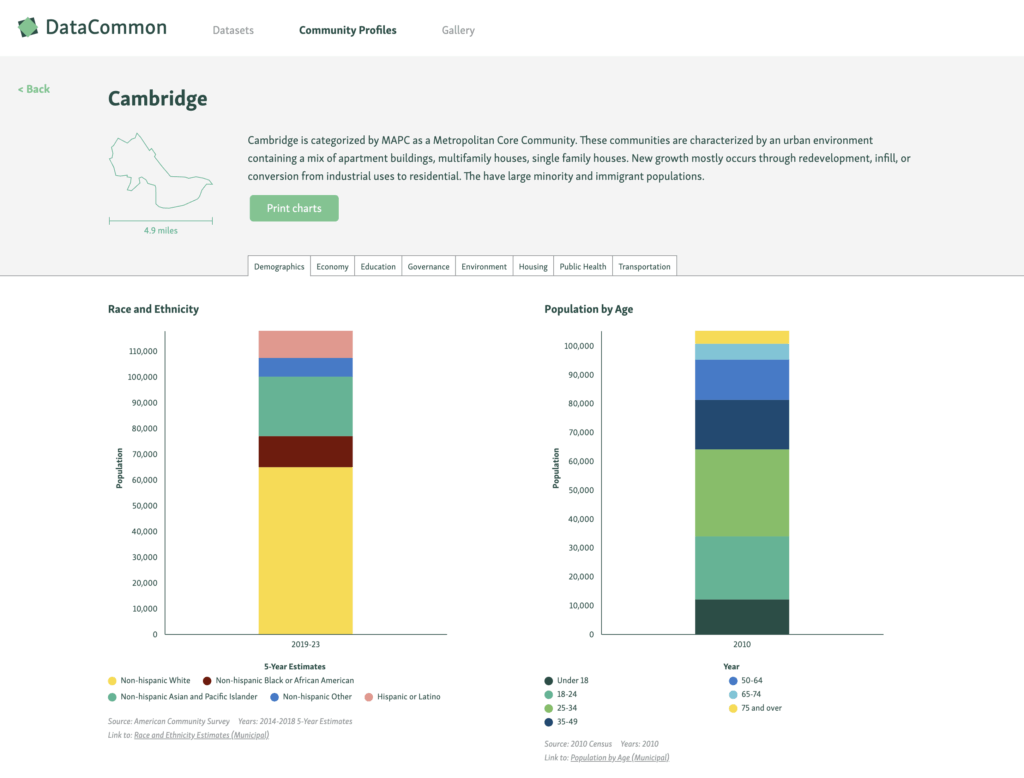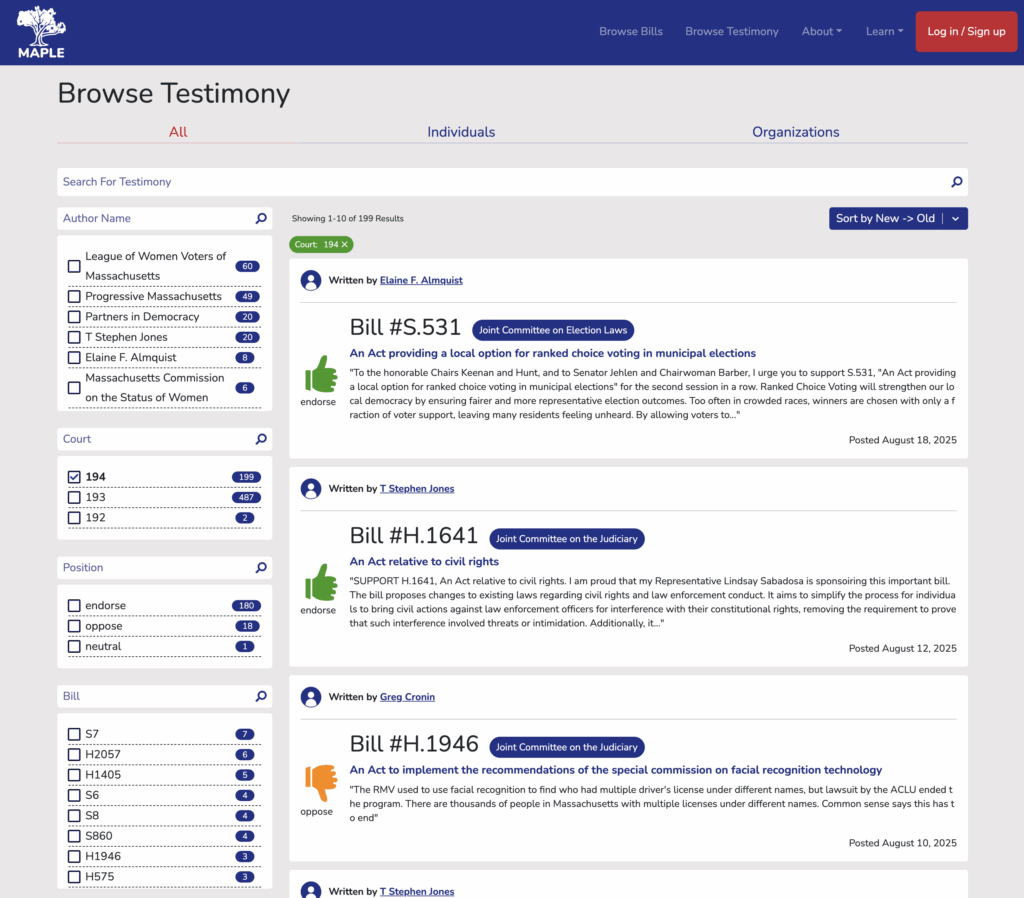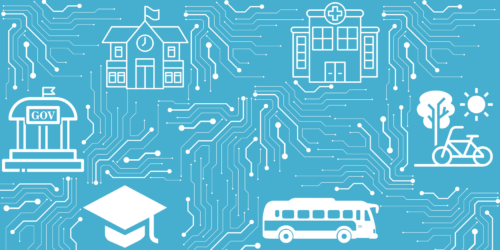In today’s increasingly online world, digital civic infrastructure serves as a critical component for citizen engagement with their government and community. Just as physical infrastructure like roads, bridges, and public buildings enable the movement of people and resources, digital civic infrastructure enables the flow of information, collaboration, and participation in our democratic processes.
Achieving robust democracy requires a healthy ecosystem in which both government-provided digital public infrastructure and independently developed civic technologies work in concert. This synergistic approach represents the ideal model for digital civic infrastructure—public institutions provide foundational platforms and services while civic tech innovators develop creative solutions that address specific community needs. Around the world, bright spots emerge where public infrastructure and civic technology successfully collaborate. Taiwan’s vTaiwan platform demonstrates one approach of how government-provided digital infrastructure coupled with independently developed civic technologies can revitalize democratic participation.1 This hybrid model combines official government data and processes with innovative engagement tools developed by civic tech organizations, which achieved notable government responsiveness with the government executing over 80% of vTaiwan’s proposals.2
Similar potential exists in communities where public investment and civic innovation together could rebuild the essential trust and engagement necessary for a thriving civic ecosystem in the digital age.
A Framework for Digital Civic Infrastructure
Inspired by New_Public’s work on healthy digital public spaces, Partners in Democracy adapted the core concepts into a “Connect, Learn, Act” framework for analyzing digital civic infrastructure.3 This framework provides a structured approach for understanding the functions that are essential to full democratic participation. These dimensions function as interconnected entry points, with the recognition that civic engagement can move across connecting with community, building civic knowledge, and taking direct action. The following examples illustrate how digital civic infrastructure tools are supporting each of these functions today.

Connect: Entry Points of Civic Participation, Becoming Part of the Community
Connect focuses on the connections that a digital space helps people form – both with each other, and to resources and institutions. The Connect dimension encompasses digital tools and platforms that serve as entry points for civic participation and community building. These tools lower barriers to initial engagement and help people find their place within civic networks.
FindIt Cambridge
FindIt Cambridge, created by the City of Cambridge, connects residents with local resources, programs, and services. Serving as a centralized information hub, FindIt Cambridge addresses a fundamental need for accessible community information by creating a “one-stop-shop” for residents to discover opportunities across the city. The platform helps residents find volunteer opportunities, city services, community events, local classes, and cultural activities, lowering the barrier to civic and social participation. As of 2024, the platform has nearly 60,000 users which is 50% of Cambridge’s current population.4 Nearly 500 local organizations post their programs or events on FindIt, including City departments, schools, local non-profits, and other Cambridge-based organizations. While this platform is designed for Cambridge, the model demonstrates how cities can centralize fragmented community resources to foster meaningful connections between residents.

FindIt Cambridge includes a categorized resource directory and event information.
Learn: Information Sharing and Civic Knowledge
Important information about our world is increasingly communicated in digital spaces. It’s crucial that those spaces help us make sense, together, of the world around us. The Learn dimension focuses on tools that build civic knowledge and facilitate information sharing. These platforms help citizens understand government structures, access public data, keep up with community developments, and build the knowledge base necessary for effective participation.
MetroBoston DataCommon
MetroBoston DataCommon is a comprehensive open data platform that provides access and visualizations of community information across Massachusetts. The DataCommon addresses a fundamental civic need by providing open, accessible, reliable, and detailed data about communities to inform planning, policy-making, research, and civic engagement. The platform centralizes data that would otherwise be fragmented across numerous sources. Today the platform includes 473 datasets across 12 categories including demographics, housing, transportation, public health, education, and more.5 Metro Boston DataCommon spans the entire state of Massachusetts with particular depth for the 101 cities and towns in the Greater Boston region.

MetroBoston DataCommon allows users to browse datasets by topics or view community profiles with data visualizations.
Act: Direct Civic Engagement and Participation
The Act dimension encompasses tools that enable direct civic engagement and create pathways for citizens to get involved with and influence governance and community life. These platforms facilitate tangible action and impact, moving beyond passive consumption of information to active participation.
MAPLE
Massachusetts Platform for Legislative Engagement (MAPLE) is an innovative civic technology platform designed to democratize access to the legislative process in Massachusetts, bringing transparency in what has traditionally been an opaque process of legislative input and influence. MAPLE makes it easier for citizens to submit testimony on pending legislation and to view testimony submitted by others. As stated on the platform: “Today, there is no legal obligation for the MA legislature to disclose what written testimony they receive and, in practice, such disclosure very rarely happens.”6 MAPLE emerged to address this, providing core platform features that bring transparency and accessibility for ordinary citizens in the legislature by providing a testimony submission tool, ability to browse current state legislation, view testimony, and more.
 MAPLE enables users to browse bills and testimony, as well as submit their own testimony online.
MAPLE enables users to browse bills and testimony, as well as submit their own testimony online.
Building a Healthy Digital Civic Infrastructure Ecosystem
While digital civic infrastructure holds promise for strengthening our experience of democracy, inadequate tools can have the opposite effect. One of the most notable examples of this type of failure was the initial launch of Healthcare.gov which cost tax payers millions, did not meet basic design requirements, and crashed as users tried to register.7 This experience hurts civic trust and public confidence in government.
In contrast, the examples above of tools such as FindIt Cambridge, MetroBoston Data Common, and MAPLE demonstrate how digital civic infrastructure can instead strengthen democracy through dimensions that enable communities to Connect, Learn, and Act. A well-balanced ecosystem of civic tools would support all three dimensions, creating multiple entry points and pathways for citizens with varying interests, skills, and resources.
Creating a healthy digital civic infrastructure ecosystem means not just deploying technology for the sake of efficiency, but thoughtfully designing tools built to enhance democratic engagement from connection to action.
The Allen Lab is expanding research related to digital civic infrastructure. If you are interested or have related work to share with us, please reach out to Sarah Hubbard (sarah_hubbard@hks.harvard.edu).
Sarah Hubbard, former Technology & Public Purpose Fellow at the Belfer Center under Secretary Ash Carter, is the Associate Director for Technology & Democracy at the Ash Center’s Allen Lab for Democracy Renovation.
Cynthia Garcia is a Research Assistant to University Professor Danielle Allen at the Allen Lab for Democracy Renovation.
The views expressed in this article are those of the author(s) alone and do not necessarily represent the positions of the Ash Center or its affiliates.







 MAPLE enables users to browse bills and testimony, as well as submit their own testimony online.
MAPLE enables users to browse bills and testimony, as well as submit their own testimony online.


